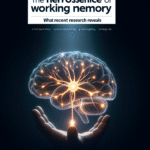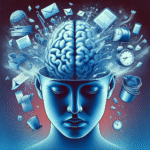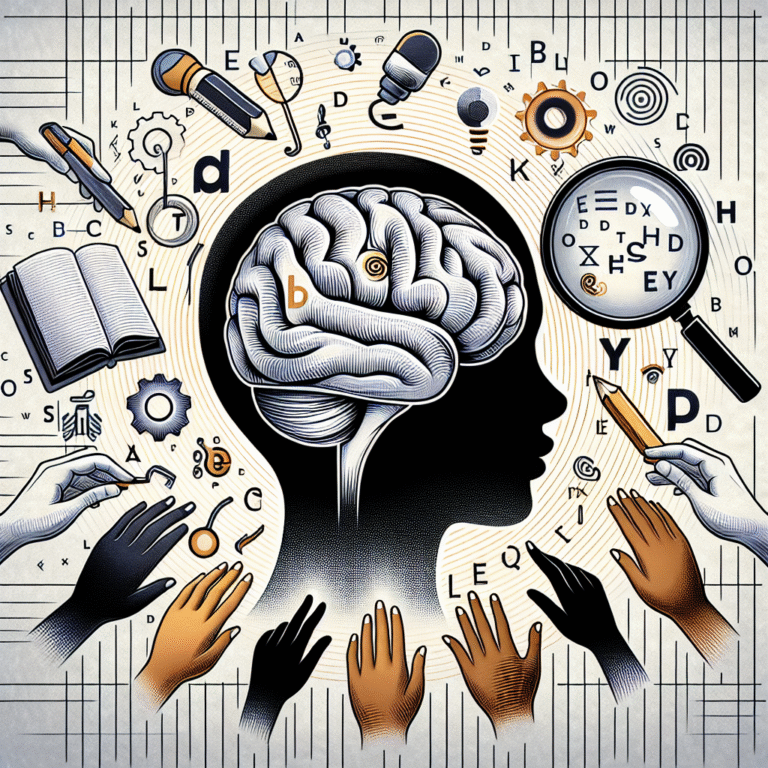
Navigating the Journey: A Parent’s Essential Guide to Supporting Children with Learning Disabilities
Introduction
Every child is unique, and while some might excel in traditional educational settings, others face challenges that require tailored support. Indeed, navigating the journey of parenting a child with learning disabilities is a path that can be both daunting and rewarding. It is a journey filled with opportunities for growth, understanding, and empowerment—not just for the child but for the entire family. This guide, Navigating the Journey: A Parent’s Essential Guide to Supporting Children with Learning Disabilities, empowers parents to embrace this journey with knowledge, resources, and strategies that foster their child’s potential.
Understanding Learning Disabilities
What Are Learning Disabilities?
Learning disabilities are neurological disorders that affect how the brain processes information. They can make it harder for children to read, write, and demonstrate their understanding in traditional ways. According to the International Dyslexia Association, about 20% of the population has some form of language-based learning disability, which is just one of many types. Others include dyscalculia (difficulty with math), dysgraphia (difficulty with writing), and attention deficit hyperactivity disorder (ADHD).
Recognizing the Signs
Awareness is the first step toward support. Signs of learning disabilities can vary greatly from child to child. Some common indicators may include:
-
- Difficulty with reading comprehension
-
- Trouble following instructions
-
- Struggles with time management and organization
-
- Inconsistent performance in school
Understanding these signs can help parents navigate the journey and advocate for their child’s needs.
Creating a Supportive Environment at Home
Setting Up for Success
A structured home environment can significantly impact a child’s ability to thrive. Here are actionable steps to ensure your home is conducive to learning:
-
- Organised Study Space: Create a quiet, clutter-free zone specifically for studying. Ensure it is well-lit and equipped with necessary supplies.
-
- Establish Routines: Develop daily schedules that include time for homework, breaks, and family activities. Consistency can help children feel secure and better manage their time.
-
- Limit Distractions: Reduce interruptions during study time by minimising noise and distractions, such as the television or mobile devices.
Emotional Support and Encouragement
Parents are crucial in promoting self-esteem and resilience in children with learning disabilities. Regularly expressing love and support can build confidence. Use positive reinforcement techniques to celebrate small successes and progress, making each achievement an event.
Engaging with Educators
Building a Support Network
Collaborating with teachers and school staff forms a vital part of navigating the journey. Here are some strategies for effective communication with educators:
-
- Attend Meetings: Participate in parent-teacher meetings to set expectations and communicate your child’s unique needs.
-
- Request Assessments: If you notice persistent challenges, work with the school to conduct educational assessments that can inform teaching strategies.
-
- Create an Individualised Education Plan (IEP): If your child qualifies, an IEP is a tailored plan designed to meet their specific educational requirements.
Case Study: The Smith Family
The Smith family faced significant challenges when their son, Alex, was diagnosed with dyslexia. Alex often felt frustrated with reading and was reluctant to engage with his schoolwork. His parents worked closely with his teachers, ensuring Alex received targeted instruction through his IEP. They also fostered a love for reading at home by incorporating audiobooks—a strategy that supported his learning and increased his self-esteem.
Analysis: The Smith family’s proactive engagement with educators exemplifies how collaboration can lead to effective support and advocacy, making navigating the journey more manageable.
Identifying Resources
Educational Resources
Various resources can significantly aid in your journey. These can include websites, apps, and tools specifically designed for learning disabilities.
-
- Learning Ally: A resource for audiobooks and other materials that cater to children with dyslexia and visual impairments.
-
- Khan Academy offers free resources that provide instructional videos and practice exercises tailored to different learning styles.
-
- Understanding.org: Provides resources, tools, and insights into different learning disabilities and how to support children effectively.
Community Support
Don’t underestimate the power of community. Support groups can provide emotional backing and valuable information. Engage with local organisations, both online and offline, to connect with other parents facing similar challenges.
Building Coping Strategies
Teaching Coping Mechanisms
As children with learning disabilities face unique challenges, teaching them effective coping strategies is essential for their long-term success. Here are some strategies to consider:
-
- Self-advocacy: Encourage children to communicate their needs. Teaching them to express their challenges empowers them and can help them access necessary resources.
-
- Use of Technology: Allow technology to assist, such as text-to-speech software, which can help with reading and writing tasks.
-
- Mindfulness and Stress Management: Encourage practices such as deep breathing, mindfulness exercises, and yoga. These tools can reduce anxiety and improve focus.
Case Study: The Johnson Family
The Johnson family discovered the significance of coping strategies when their daughter, Mia, was diagnosed with ADHD. After noticing Mia struggled with focus and impulsivity, they introduced mindfulness practices into her daily routine. This change led to improved concentration and better emotional regulation during homework sessions.
Analysis: The Johnson family’s experience highlights the effective role of coping strategies and mindfulness in navigating the journey toward academic success.
Collaborating with Professionals
The Role of Therapists and Tutors
In addition to school resources, therapists and specialised tutors can provide additional support. Occupational therapists can help with fine motor skills, while tutoring can reinforce classroom learning. Research shows that individualised support, tailored to a child’s specific learning profile, can yield significant improvements.
When to Seek Professional Help
Knowing when to seek professional assistance can be challenging. Consider consulting a specialist if:
-
- Your child struggles with significant anxiety related to schoolwork.
-
- You notice underlying behavioural issues affecting social interactions.
-
- Homework becomes a daily battle, causing stress for both you and your child.
Advocating for Your Child
Understanding Legal Rights
Familiarise yourself with your child’s legal rights within the school system. The Individuals with Disabilities Education Act (IDEA) guarantees the right to free appropriate public education (FAPE) for children with disabilities.
Empowering Your Child to Advocate
Teach your child the importance of self-advocacy. Encourage them to express their needs during IEP meetings or school discussions. Provide them with the vocabulary to articulate their challenges, fostering independence and confidence.
Building Resilience and a Growth Mindset
Encouraging a Positive Mindset
Help your child develop a growth mindset by emphasising the value of effort and persistence. Use language that challenges the concept of “I can’t” into “I can’t yet.” Celebrating challenges and viewing setbacks as learning opportunities can foster resilience and determination.
Case Study: The Brown Family
The Brown family recognised the struggles their son, Jake, faced with mathematics. Instead of viewing his challenges as failures, they celebrated the effort he put into overcoming obstacles. Jake learnt to embrace difficulty, ultimately leading to improved grades and a newfound love for learning.
Analysis: The Brown family’s approach illustrates the transformative power of fostering a growth mindset within the context of navigating the journey alongside children facing learning disabilities.
Conclusion
Navigating the journey of supporting a child with learning disabilities is undeniably complex, yet it is filled with hope and potential. As a parent, you possess the power to significantly influence your child’s academic and social success through informed advocacy, emotional support, and resource utilisation.
As you embark on this journey, remember that the road may be challenging, but persistence, patience, and love will pave the way for your child’s success. You have the tools and knowledge at your disposal to make a profound difference in their life—embrace this role wholeheartedly!
FAQs
1. How can I tell if my child has a learning disability?
Identifying the early signs of learning disabilities is essential for timely support. Watch for challenges such as difficulty with reading, writing, or math; trouble following multi-step instructions; and inconsistent school performance compared to peers. Children may also show signs of frustration, avoiding tasks they find difficult. Recognising these patterns is a crucial first step in supporting children with learning disabilities. To better understand these signs, visit this article on recognising early indicators.
2. What steps should I take if I suspect my child has a learning disability?
If you suspect your child may have a learning disability, begin by discussing your concerns with their teacher to understand their performance in a classroom context. Next, consider a formal assessment conducted by an educational psychologist or learning specialist to confirm a diagnosis. Early action is key to supporting children with learning disabilities, as it ensures they receive the necessary interventions. For more guidance on this process, explore this guide to diagnosis and next steps.
3. Can learning disabilities be diagnosed?
Yes, learning disabilities can be diagnosed through specialised assessments designed to identify cognitive and academic challenges. These evaluations often involve tests for memory, language, problem-solving, and other areas. Diagnosis is a pivotal step in supporting children with learning disabilities, as it helps parents and educators create targeted plans for improvement. Learn more about diagnostic tools and processes in this resource on assessment for learning disabilities.
4. How can I support my child emotionally?
Emotional support is as critical as academic support when supporting children with learning disabilities. Regularly affirm your love and belief in their abilities, encouraging open communication about their feelings and experiences. Celebrate small achievements to boost their confidence and help them focus on their strengths rather than their struggles. To learn more about fostering resilience and emotional well-being, check out this guide to emotional support for children with learning challenges.
5. How can technology assist my child with learning disabilities?
Technology offers valuable tools for supporting children with learning disabilities. Voice-to-text software can help children who struggle with writing, while audiobooks and text-to-speech applications make reading more accessible. Organisational apps and graphic organizers aid in managing tasks and structuring ideas. These tools empower children to overcome challenges and engage more fully with their education. For an overview of the best tech solutions, visit this article on assistive technology for learning disabilities.
By recognising the signs early, seeking professional help, and leveraging both emotional support and innovative technology, parents can excel in supporting children with learning disabilities. For more expert advice and resources, visit PsyForU.


















